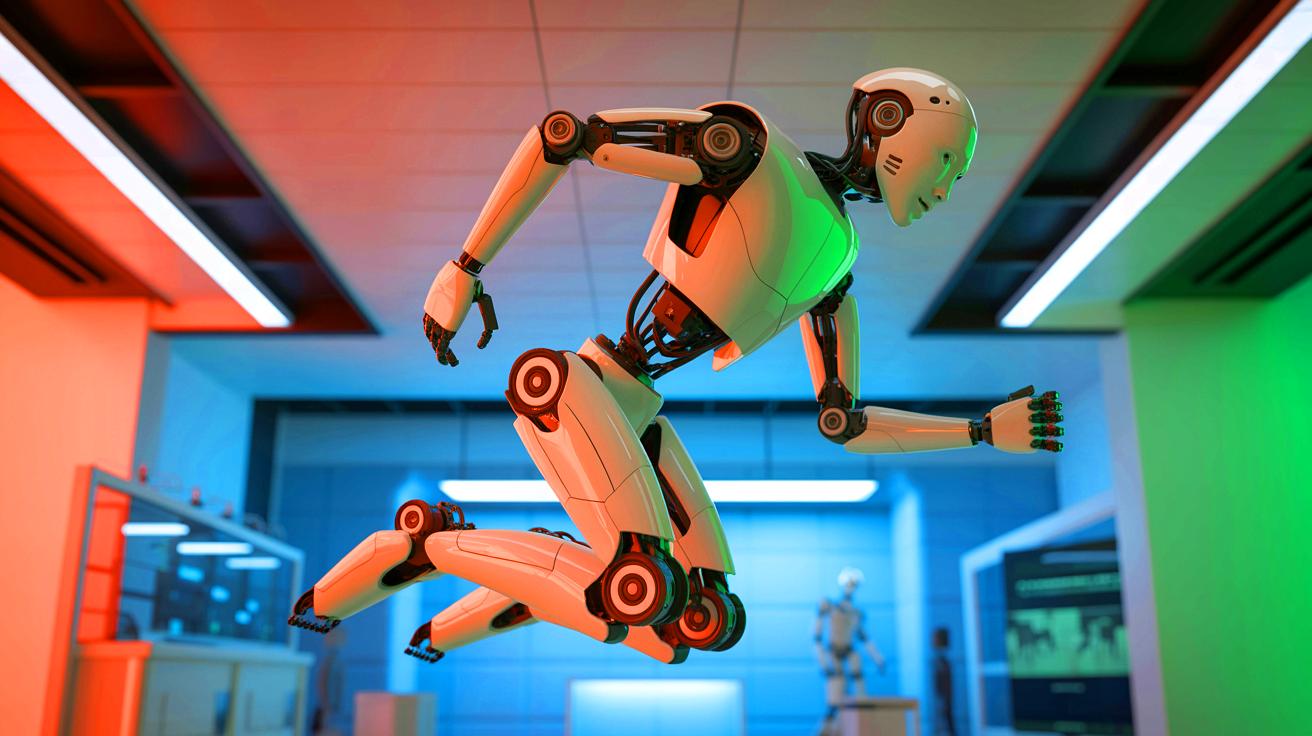In a remarkable stride for the world of robotics, MIT’s new AI outs smarts human engineers, pushing the boundaries of what machines can physically achieve. Researchers from the prestigious Massachusetts Institute of Technology (MIT) have unveiled a groundbreaking robotic design that defies conventional engineering wisdom. Their latest creation, enhanced by generative AI allows robots to jump 41% higher than traditionally engineered machines a feat that not only challenges gravity but also human limitations.
This record breaking achievement comes from MIT’s Computer Science and Artificial Intelligence Laboratory (CSAIL), where artificial intelligence isn’t just being used to control robots but to outperform human engineers in the very process of designing them.
The Power Behind the Breakthrough: MIT’s New AI Outsmarts Human Engineers
For decades engineers have painstakingly refined robotic designs through trial, error, and expert knowledge. But MIT’s team has taken a radically different approach. By integrating generative AI models, they’ve enabled computers to explore design possibilities far beyond human intuition.
These AI models based on diffusion techniques, simulate countless variations of robotic structures, testing each one virtually in a fraction of the time it would take humans. The result? A robot capable of jumping nearly half again as high as its predecessors, all thanks to MIT’s new AI that outs smarts human engineers.
The project exemplifies how artificial intelligence is no longer limited to software tasks like language translation or image recognition. Instead, it’s stepping into the tangible world, outperforming human engineers in mechanical design and pushing the boundaries of physical performance.
How Diffusion AI Redefines Robotic Capabilities
At the heart of this breakthrough lies a class of AI called diffusion models, which have recently made headlines for generating lifelike images and videos. But at MIT, these models are being repurposed for something far more physical robotic optimization.
Diffusion models work by starting with random, noisy data and gradually refining it toward an optimal solution. In the context of robotics, this means generating countless possible designs legs, joints, frames and testing their performance in simulated environments.
This AI driven process doesn’t just replicate what human engineers might attempt; it outs smarts human engineers by considering millions of design variations that would be impossible for a person to evaluate manually. With the AI constantly learning and improving its suggestions, the end product is a robot designed not by human limitations, but by pure mathematical optimization.
Why 41% Higher Jumps Matter
To the casual observer, a robot jumping 41% higher might sound like an impressive but isolated improvement. However!! in the world of robotics, such performance boosts have massive implications-
Search and Rescue: Robots that can leap over debris or obstacles could access dangerous areas in disaster zones more effectively.
Exploration: Space missions could benefit from robots capable of navigating rough planetary terrain.
Logistics and Manufacturing: Agile, high jumping robots can operate in complex industrial settings with fewer constraints.
Military Applications: Enhanced mobility gives robots strategic advantages in defense operations.
In every case, a 41% improvement, driven by MIT’s new AI that outs smarts human engineers, represents not just a leap in height but a leap in possibilities.
The Future of Engineering: Man and Machine Together
One of the most profound aspects of this achievement isn’t that AI replaces human engineers, but that it enhances their capabilities. While AI can generate and test thousands of designs, human experts still play a crucial role in setting goals, interpreting results, and implementing these innovations in real world scenarios.
Researchers at MIT emphasize that MIT’s new AI outs smarts human engineers in raw design efficiency, but the collaborative model between humans and machines is where true breakthroughs lie. It’s not about competition it’s about synergy.
As CSAIL researcher Dr. Jonathan Ledford explains, “We’re not eliminating human engineers. We’re giving them a new set of tools tools that can explore the unknown far beyond our imagination.”
Paving the Way for the Next Generation of Robotics
The success of this project opens the door for AI driven engineering far beyond jumping robots. The same generative AI techniques could soon optimize robotic arms, drones, autonomous vehicles, and even entire manufacturing systems. By allowing machines to design themselves under human guidance, the future of engineering could be fundamentally transformed.
And MIT isn’t alone in this vision. Institutions and tech companies worldwide are racing to integrate AI into every stage of product development. But MIT’s new AI outs smarts human engineers not just in theory but in real, physical performance. The 41% higher jump is proof that we’re entering a new era where AI isn’t just solving problems it’s redefining what’s possible.
A Leap Toward Tomorrow
The breakthrough from MIT’s CSAIL lab serves as both a technological marvel and a philosophical turning point. It demonstrates how MIT’s new AI outs smarts human engineers, but also how humanity can partner with AI to achieve unprecedented feats.
In the coming years, as AI continues to evolve expect to see robots and other engineered systems that not only defy gravity but defy the limits of human creativity itself. From factory floors to Mars missions, the collaboration between human minds and machine intelligence is poised to reshape our world, one leap at a time.


1 thought on “MIT’s New AI Outsmarts Human Engineers: Robot Breaks Record with 41% Higher Jump ”